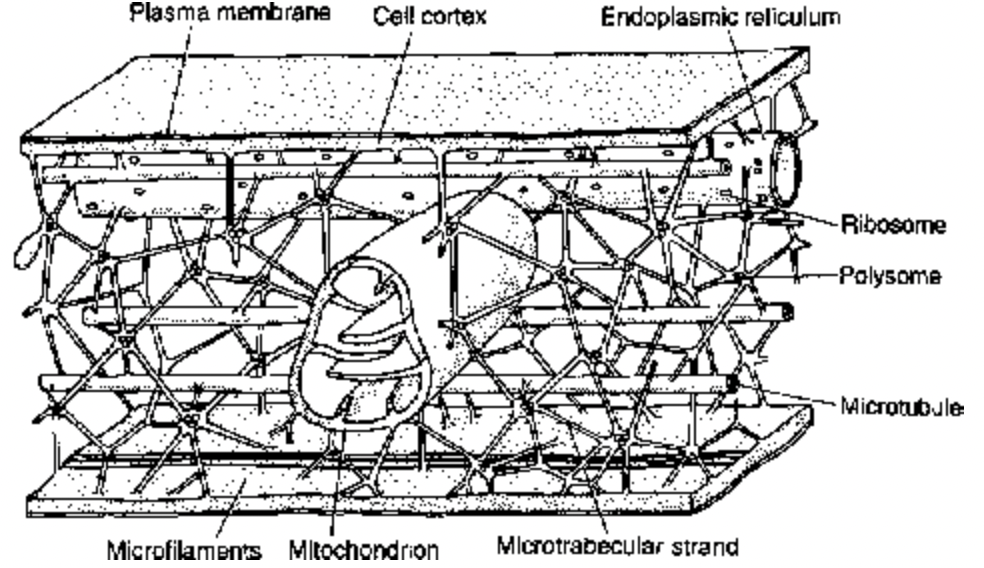Cytoskeletal Structures
Structure of Cell of Class 11
T.
Fig. Cytoskeleton and some other associated cytoplasmic organelles
hese are fibrous or fine tubular structures which form the supportive structures of the cell. These are of two types — microtubules, microfilaments
(a) Microtubules discovered by Robertis and Franchi, (1953) term coined by Slautterback (1963).
Unbranched hollow non-contractile tubules of indefinite length, 25 nm in thickness with 15 nm core and formed of 13 helically arranged protofilaments of and -tubulin protein. Microtubules grow from
nucleating centres. Microtubules are basic structures of spindle apparatus, centrioles, basal bodies, cilia and flagella and are responsible for cell motility and maintenance of shape.
(b) Microfilaments are cylindrical solid, contractile rods or filaments of actin and myosin protein with a diameter of 6 to 10 nm. Microfilaments can form hexagonal bundles, take part in cytoplasmic streaming, membrane undulations, cleavage, contraction of muscles, movement of microvilli to absorb food and endocytosis.
- Introduction of Cell
- Concept of Protoplasm
- Theory of Cell
- Cell organization
- Cell Size
- Cellular Totipotency
- Types of Cell
- Flow of Information
- Structure of Cell
- Cell Membrane
- Endoplasmic Reticulam
- Golgi Appratus
- Lysosomes
- Mitochondria
- Plastids
- Nucleus
- Chromosomes
- Ribosomes/Palade Particles/Protein Factories
- Microbodies
- Centrioles
- CILIA AND FLAGELLA
- Cytoskeletal Structures
- Cytoskeletal Structures
- Exercise 1
- Exercise 2
- Exercise 3
- Exercise 4
- Exercise 5
- Exercise 6









